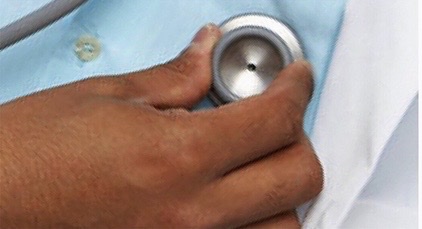
I’ve had the opportunity to address a couple of medical conferences lately – academic lectures on demystifying basic meditation training for physicians. The presentations mirror the approach of PM: that mindfulness is a trainable capacity that doctors (and therapists, and teachers, and parents) could and should use themselves and teach their patients (and clients, and students, and family.) PM actually features an Appendix that provides stepwise instructions for caregivers on that teaching.
(Hilarity ensues as I crack wise that I also wrote it to show surgeons evidence of an Appendix that does not automatically require removal.)
That clinical work has been more, well, weird lately, as the layered stressors of 2020 persist in my patients’ lives and mine. The once-information-rich in-person setting for our work has become a two-dimensional screen, often as not broken by pixelating, feedback, and transmission breakups. These were not treatment conditions covered in shrink school. But, no real complaints here; instead, gratitude for some workable mode of continuing to safely do the work.
Yet, my technological struggles are nothing compared to the erosive effect of COVID on our frontliners, healthcare professionals in direct contact with suffering patients and now facing further waves of “peak virus.” There have been so many instances of genuine appreciation for their efforts, from the pot-banging evensong ringing out New York City windows during their worst moments in April to the individual expressions of gratitude and care my colleagues report from many patients.
But ultimately the coping for caretakers is an individual affair.
Doctors, nurses, aides, and others face their own challenge of their anxiety in the moment of direct patient interaction: is my PPE safe enough? How sure am I that I’m not bring this home to family, or to another patient? Protocols are better than ever, but doubt can’t help but linger – a state of experience that must be adapted to in an interior way. There’s the learning-on-the-fly cognitive challenge of shifting treating protocols for managing a critical illness, that learning challenge competing with sheer physical and mental exhaustion.
The broader tension, often a mix of anxiety, sadness and grievance, also simmers. The sheer death count, now over 260,000, is truly morbid; and each death represents a cascade of loss not just for the beloved but their families and caregivers. The next waves of increased caseloads and effort, often following the foolish flouting of sensible mitigation efforts to avoid “superspreader” social events, are hard to fathom but now a grim expectation.
Perhaps the most challenging to our oath of care is managing an unprecedented kind of cognitive dissonance: of attending with compassion to some who vigorously refute belief in the illness they or their loved ones are threatened by. Transcending that gap in understanding to remain helpful is a surprising, additional challenge not faced in prior pubic health emergencies.
While “burnout” is not a clinical term, it’s an obvious label for the legions of overworked care providers, and an ominous one. In the training program where I teach, we’re trying to be hyper-aware of and responsive to what a trial by fire this year is for residents and medical students. Open ears to their concerns is a given, and reinforcing self-care through advocacy and modeling of exercise, mindfulness practices, and (distanced) group activities and contacts are all part of that.
We hope it’s enough for them, and for us.
Take care and stay safe. GCS
Find Practical Mindfulness at:
https://mango.bz/books/practical-mindfulness-by-greg-sazima-1556-b
https://www.amazon.com/Practical-Mindfulness-Physicians-No-Nonsense-Meditation/dp/1642504378
https://www.barnesandnoble.com/w/practical-mindfulness-greg-sazima-md/1137182141?ean=9781642504378